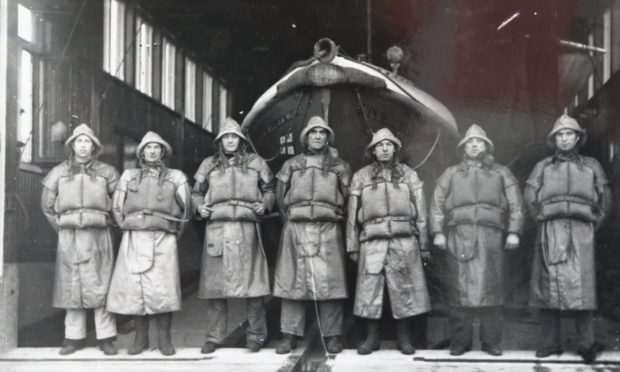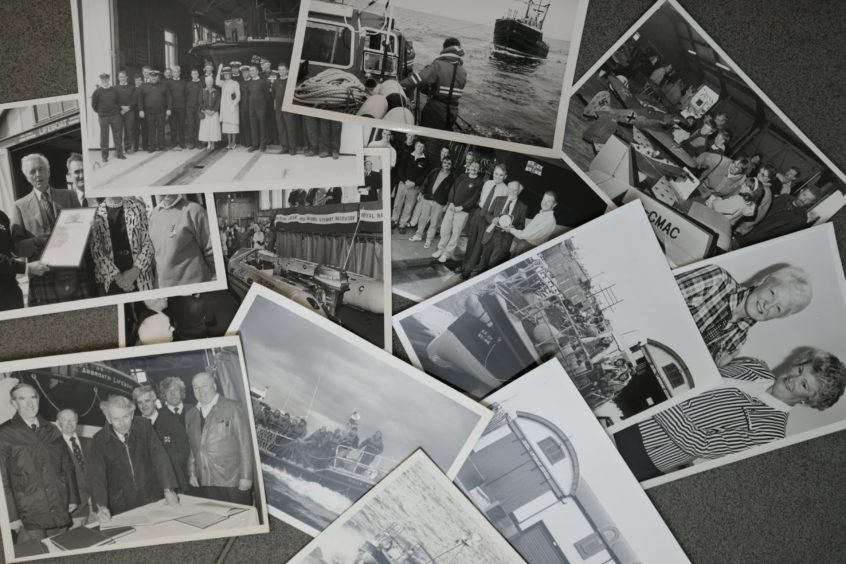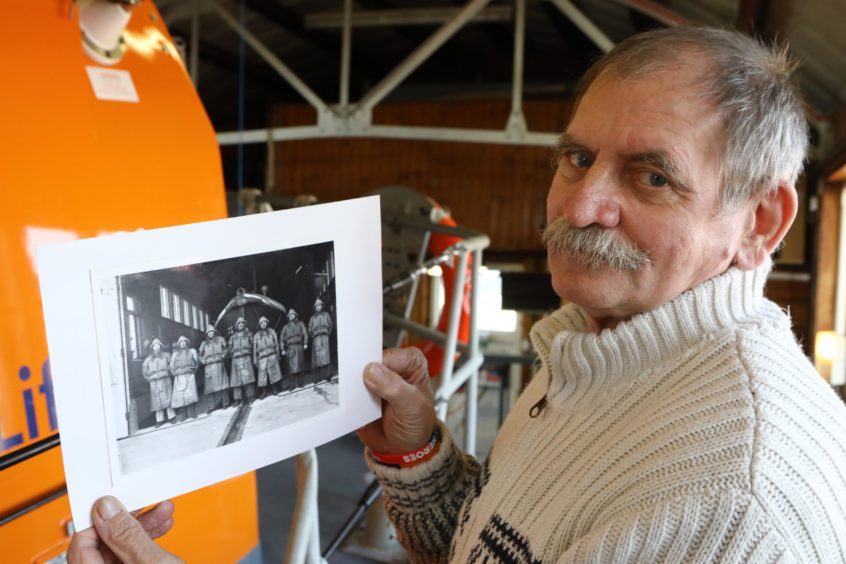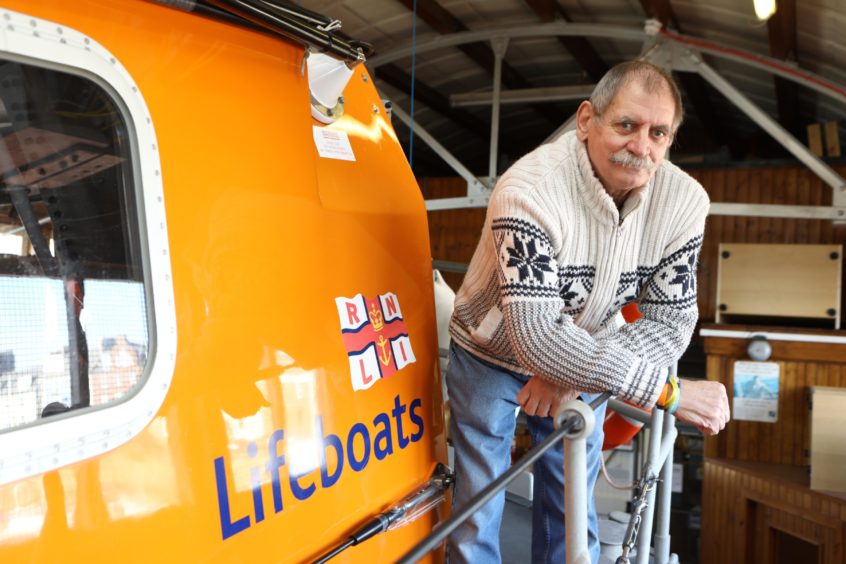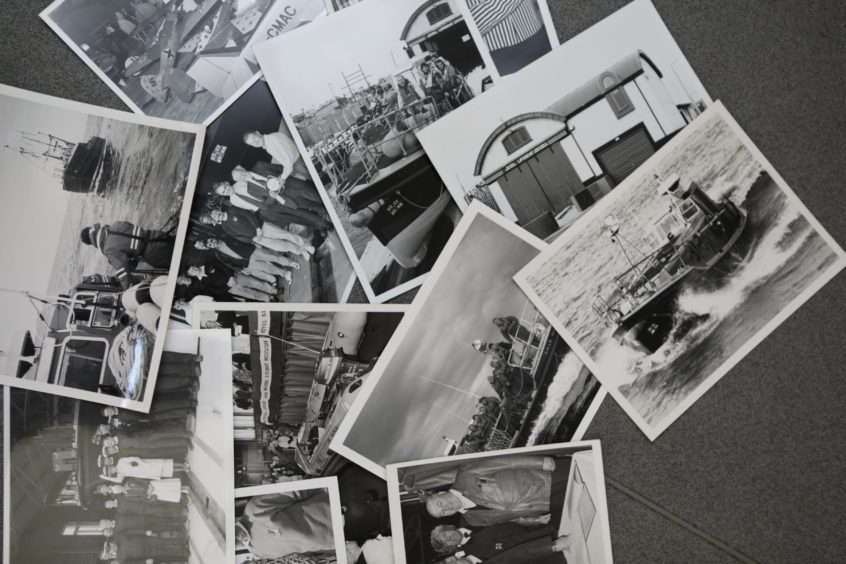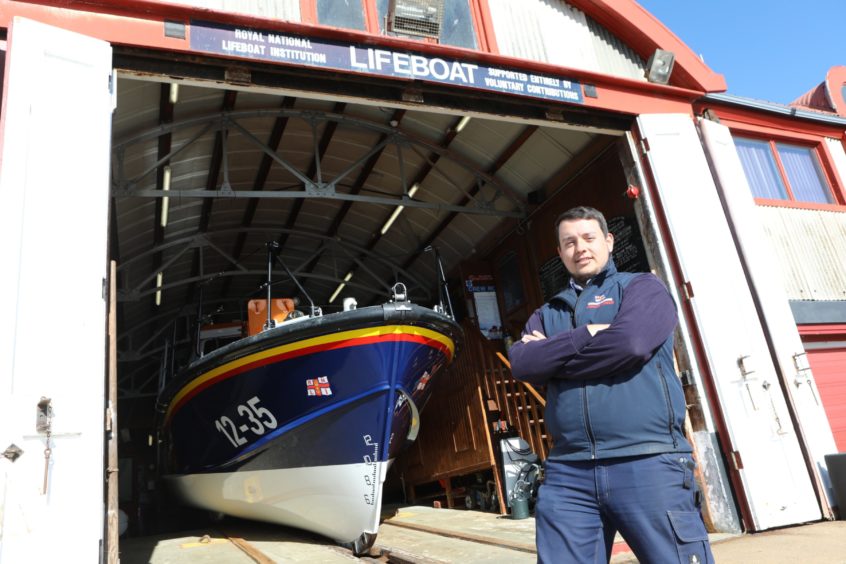It has been a history with heroism sewn through it going all the way back to 1803.
Rarely-seen images which have been donated to the shed tell just a few of the stories from Arbroath Lifeboat’s proud heritage and celebrate generations of RNLI lifesavers.
The bundle of old photos offer a unique snapshot of Arbroath history and include a stunning picture of the crew standing next to the town’s first motorised lifeboat in 1940 which was eight years after the new boathouse and slipway were built.
Steel men
“They were steel men in wooden boats,” said Arbroath coxswain Sam Clow, 27.
“You look at those life jackets and those oilskins compared to the equipment we now use and it is another world.
“These guys used to go out in extreme weather with next to no safety equipment or nautical equipment in these wooden boats.
“You think about the things these crew members must have experienced and the lives these men must have saved.
“I don’t know a lifeboat crew member that doesn’t enjoy looking back at how far we have come.
“It’s not just the station’s history, it’s our history.
“It’s every crew member’s history, because without that boat and these blokes we wouldn’t be here.
“For me, as a relatively new part of the station’s history, it’s great to be able to hear these stories and put faces to the names and see the development of the station and the equipment over the years.”
The images will be preserved for future generations after being donated by Barbara Cargill whose late husband was a lifeboat mechanic.
The town is home to one of the oldest stations in Scotland and over the years, its crews have been honoured with seven awards for gallantry.
Ron Churchill, 67, was the UK’s oldest-serving lifeboat crewman and was involved in saving no fewer than 21 lives before it was time to step off the boat and hang up his life jacket.
He still remains an integral part of the lifeboat service at Arbroath as volunteer deputy launch authority and training assessor for the station.
“It’s our heritage and it’s our forebearers in these photos,” said Ron, who has 39 years of service.
“These are the guys who started this all off.
“If you look at the history of the call-outs, these guys were going out in rowing boats and saving 60 people.
“Can you imagine what a feeling that must have been?
“I’ve been with the crew almost 40 years and I have saved 21 lives.
“Over the years the amount of people that have been saved by the RNLI is thousands.”
Memorabilia
He joined the crew on May 2 1981 and became emergency mechanic for the all-weather lifeboat in September 1995.
He previously served in 29 Commando Regiment Royal Artillery and has three campaign medals to his name, including one for service in the Falklands.
Ron said he is fascinated by anything to do with the history of Arbroath Lifeboat Station.
He has a collection of memorabilia which includes old crew lists, thousands of newspaper cuttings and old photographs.
Ron is included in some of the images and he told how he started to volunteer for the lifeboat after being asked by mechanic Dave Cargill.
“I think it was just out of courtesy that I said I would come down and that was it – I got the bug,” he said.
“What is the bug? It’s just something within you.
“If your pager goes off, you are here.”
Arbroath’s lifeboat service was established in 1803, before being transferred to the RNLI in 1865.
Arbroath Town Council agreed to build a boatshed on East Grimsby.
The lifeboat was funded by an appeal to the readers of the People’s Journal newspaper.
The appeal raised so much money that there were sufficient funds to pay for two new boats and People’s Journal No.2 arrived in 1866.
In 1905 the German schooner Gesine grounded at Westhaven and the lifeboat James Stevens was launched.
The rescue of the five-man crew was carried out amid considerable danger – a fact recognised by the Kaiser, who presented silver watches, each engraved with his monogram, to the first and second coxswains and the bowman, along with £20 to be shared equally by the rest of the crew.
Arbroath continued to use pulling and sailing boats until 1932 when the John and William Mudie entered service.
The Duchess of York named the new vessel and an ‘ABC Presents’ black and white film recorded the event.
Crews saved many lives over the years but also suffered tragedy at sea.
On October 27 1953, the lifeboat Robert Lindsay was lost after being struck by a huge wave close to the harbour following a search for a vessel in distress.
Six crew members perished.
The present lifeboat, ‘Inchcape’ takes her name from the reef on which the Bell Rock lighthouse stands.
Arbroath also has an inshore lifeboat, the D class boat, Robert Fergusson, named after one of the first poets to write in both Scots and English.
Extended family
Volunteers drop everything to respond to the sound of their pager to help make a difference.
This can often mean giving up valuable family time.
Sam said the story so far can only continue thanks to the help, support and understanding shown by the crew’s “extended family”.
“What people don’t realise is that the crew is an extended family,” said Sam.
“Without the support of wives, partners, kids, aunts, uncles and grandparents – who step in at a moment’s notice – none of this would happen.
“You are just about to leave the house with the kids to go for a Sunday roast at the grandparents and your pager goes off and you are away.
“It’s the understanding of the people at home that allows that to happen.”
